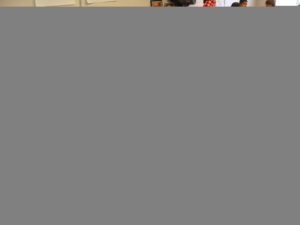Circuits, Batteries, Bulbs and Beyond

Author(s): Tino Aleman and Jaime Cuello
Subject: Physics
Grade Level(s): Grade 4
Big Idea(s): Students create parallel and series closed circuits using wires, energy source and a light bulb. Then by working in groups students can increase the size and complexity of circuits by combining resources.
What you need: batteries,
light bulbs
wires
butcher paper
science journals
Setting: Classroom, students in groups of four,
Time Needed: 45 minutes to 1 hour
Summary:
Specific learning objectives (focus on what students should know at end of lesson): Vocabulary: electrical current or flow, positive, negative electrons, circuit= circle, series = 1,2,3
students uses prior knowledge to create circuits in series and parallel by creating one circuit with a battery, wire and a light bulb, then students increase the number of batteries, light bulbs to create the circuits in series and parallel
Learning Goals / Objectives:
Students will successfully create simple and complex closed series and parallel circuits.
English Language Learners experience hands on activities and have opportunities to practice new vocabulary in small groups.
4 California Standard 1.a. Students know how to design and build simple series and parallel circuits by using components such as wires, batteries, and light bulbs.
Background
students uses prior knowledge to create circuits in series and parallel by creating one circuit with a battery, wire and a light bulb, then students increase the number of batteries, light bulbs to create closed circuits in series and parallel
Setup:
Classroom, students in groups of four, and physically the desks are moved to create a large flat table surface
pictures/diagrams of series and parallel circuits on butcher paper
Anticipatory Set:
Used experience with tuning lights on and off
What is required to turn on ignition in a car.
flash light experiment creating a simple circuit
Special modifications made by team: go over cognate vocabulary for English Language Learners
pictures/diagrams on butcher paper
Review about electrons, and flash light lessons
Instructions / Activities:
1. Teacher goes over information on series and parallel circuits
2. Students in groups of four select person to bring materials, batteries, wires, light bulbs
3. Students work in small cooperative groups
4. Students experiment with materials
5. Students remake flashlight /lesson/activity
6. Students create series circuits with batteries, bulbs and wires
7, Students construct DC circuits
8. Students discuss activities and draw results
9. Students report back orally
Assessment:
Result of hands-on activities,
Expository writing
Circuit demonstration on web-site
phen.colorado.edu
Wrap-up / Closure:
Have students create different models of series and parallel circuits on their science journal and label models using science vocabulary.
English Language students label using cognates.
students can also create complex circuits in
phen.colorado.edu
Also students can do the following activities in preparation for open house, science night, science fair
Hands on creation of simple series and parallel circuits, journals, art projects of atoms, and circuits
Attachments: https://ccsplibrary.com/wp-content/uploads/gravity_forms/1-98399c595b52310e23a081ee652e5a53/2013/06/electicity02.xls

